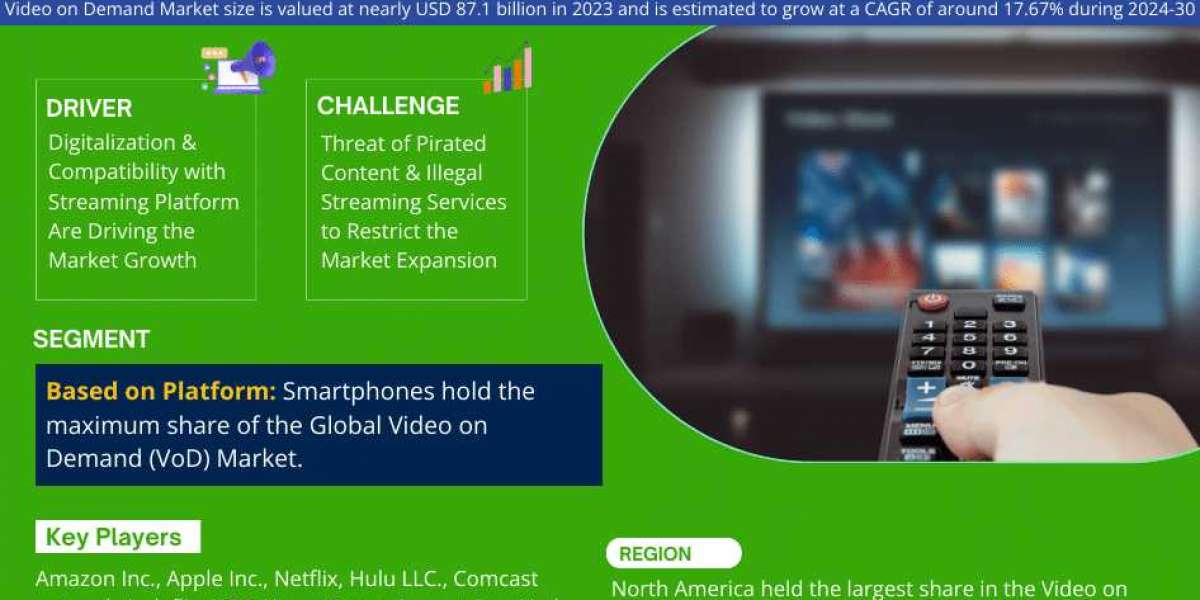Introduction:
The way healthcare is provided is being completely transformed by digital health technologies, which also present new opportunities to lower costs, increase access to care, and improve patient outcomes. Digital health innovations are changing the way that care is delivered across the continuum, from prevention and diagnosis to treatment and follow-up, from telemedicine and remote monitoring to electronic health records and health applications. This article examines how digital health affects the provision of healthcare, stressing its advantages, difficulties, and promise.
The Rise of Digital Health:
The term "digital health" refers to a broad category of technologies and solutions that use connection, data analytics, and digital tools to enhance health and healthcare delivery. Digital health solutions are expanding quickly thanks to the widespread use of smartphones, wearable technology, remote sensors, and internet connectivity. These solutions give new avenues for patient engagement, provider empowerment, and workflow optimization in the healthcare industry.
Telemedicine and Virtual Care:
Patients can communicate with medical professionals remotely using encrypted messaging apps, video conferences, and phone calls thanks to telemedicine. Virtual care systems allow patients and doctors to communicate in real time, eliminating the need for in-person visits for diagnosis, treatment, monitoring, and follow-up. Particularly during the COVID-19 pandemic, telemedicine has gained popularity as a secure and practical substitute for conventional office visits.
Remote Patient Monitoring:
In addition to traditional clinical settings, remote monitoring technologies allow healthcare personnel to keep tabs on patients' vital signs, symptoms, and health data. Wearable technology, which includes fitness trackers, smartwatches, and biosensors, gathers real-time data on activity levels, blood pressure, heart rate, and glucose levels. This data enables continuous monitoring and the early identification of health problems. In addition to preventing readmissions to hospitals, remote monitoring can assist manage chronic illnesses and enhance patient outcomes.
Electronic health records, or EHRs, are digital versions of patient health records that are stored in a single, centralized electronic database. This information includes the patient's medical history, prescriptions, allergies, test results, and imaging studies. EHRs promote evidence-based decision-making, expedite clinical workflows, lower medical mistakes, and enable secure sharing of patient data among healthcare professionals. Because of quality improvement programs, legal requirements, and government incentives, EHR use has proliferated.
Electronic Health Records (EHRs):
Health applications and digital technologies give people the ability to take charge of their health and well-being by giving them access to wellness initiatives, self-management tools, and tailored health information. With the use of mobile apps, users may monitor their health, track their progress toward health objectives, and connect with healthcare providers. Features like symptom tracking, medication reminders, fitness coaching, mental health assistance, and telehealth consultations are accessible to users.
Digital Health's Advantages for Healthcare Delivery:
Digital health technologies have a multitude of advantages for healthcare organizations, providers, and patients.
Better Access to Care:
Digital health makes healthcare services more accessible, especially to underprivileged and isolated groups that encounter obstacles related to mobility, transportation, or location. Patients can interact with clinicians from the comfort of their homes with the help of telemedicine and virtual care platforms, which eliminates travel requirements and shortens appointment wait times.
Enhanced Patient Engagement:
By giving patients access to interactive self-management tools, instructional materials, and individualized health information, digital health solutions let patients take an active role in their care. Patients are more likely to be satisfied and to stick to treatment regimens when they actively participate in decision-making, set health goals, monitor progress, and communicate with their healthcare team.
Continuity of Care:
By permitting safe contact and information exchange across healthcare professionals in various contexts and specializations, digital health technologies facilitate the smooth continuation of care. treatment coordination, transitions between treatment settings, and cooperative decision-making are made easier by the availability, consistency, and up-to-dateness of patient data that is guaranteed by electronic health records.
Effective Workflow and Resource Utilization:
Within healthcare organizations, digital health optimizes resource utilization, minimizes administrative burdens, and simplifies clinical workflows. By scheduling telemedicine visits more effectively, provider productivity can be maximized and appointment no-shows can be decreased. Proactive interventions, prompt follow-up, and focused resource allocation for patients at high risk are made possible by remote monitoring techniques.
Data-Supported Perspectives and Decision-Making:
Large volumes of data on patient outcomes, behavior, and health are produced by digital health, and these data can be examined to provide useful insights and guide clinical decision-making. Algorithms using data analytics, machine learning, and artificial intelligence can customize interventions, anticipate health risks, stratify patient populations, and spot trends, all of which contribute to the delivery of more accurate and efficient healthcare.
Obstacles and Things to Think About
Digital health holds great promise, but in order to fully realize its potential and provide fair access to care, a number of issues and concerns need to be taken into account:
Disparities in Access and Health Equity:
Health inequities and disparities in access to digital health technology can be made worse by socioeconomic disparities, gaps in digital literacy, and access restrictions. The adoption and utilization of digital health solutions may provide obstacles for vulnerable populations, including but not limited to older persons, low-income individuals, rural dwellers, and members of minority groups, as they may not have access to technology, internet connectivity, or technical support.
Security and Privacy Issues:
Concerns of patient data security and privacy are brought up by digital health, especially in relation to the gathering, storing, and sharing of private medical records. To protect patient privacy and confidentiality, healthcare businesses must have strong data security measures in place, encryption techniques, access restrictions, and compliance with legal obligations like the Health Insurance Portability and Accountability Act (HIPAA).
Technological Barriers and the Digital Divide:
The term "digital divide" describes the differences in how different demographic groups have access to technology and internet connectivity. The exclusion of certain individuals from the benefits of digital health solutions due to their lack of access to cellphones, laptops, broadband internet, or digital literacy skills could exacerbate already-existing gaps in healthcare outcomes and access.
Regulatory and Compensation Difficulties:
Adoption is hampered by the inconsistent legal frameworks and payment practices for telemedicine and digital health services throughout payers and jurisdictions. When deploying digital health solutions, healthcare providers must traverse complicated regulatory regulations, licensure concerns, reimbursement models, and documentation standards. These factors might have an impact on the solutions' long-term financial viability.
Prospects Future Courses:
Future developments in digital health have a great deal of potential to change the way that care is provided and enhance population health:
Precision health and personalized medicine: Digital health makes it possible to deliver healthcare in a way that is unique to each patient's requirements, preferences, and traits. Precision health endeavors utilize digital phenotyping, genetics, biomarkers, and predictive analytics to customize interventions, enhance treatment results, and avert illness at the personal level.
Population Health Management:
By identifying at-risk groups, classifying patient cohorts, and putting targeted interventions into place to enhance health outcomes and lower healthcare costs, digital health helps population health management programs. Healthcare institutions can address the underlying causes of poor health in communities by addressing upstream factors, inequities, and population health analytics and social determinants of health data.
Value-Based Healthcare and Non-Traditional Payment Schemes: Value-based care principles are aligned with digital health since it prioritizes patient experience, quality, and outcomes over quantity of services provided. Alternative payment methods that encourage the use of digital health solutions, enhance care coordination, and improve patient outcomes while controlling costs include bundled payments, accountable care organizations (ACOs), and pay-for-performance incentives.
Innovation and System Transformation in Health Care:
Digital health is a catalyst for innovation and change in the healthcare industry, bringing about adjustments to organizational designs, business procedures, and models of care delivery. Healthcare systems are allocating resources to digital health startups, incubators, accelerators, and innovation hubs in an effort to use technology, promote teamwork, and propel ongoing enhancements in patient care, care delivery, and population health management.
Conclusion:
The delivery of healthcare is changing due to digital health, which presents previously unheard-of chances to enhance patient access, service quality, and efficiency. Healthcare organizations may break through conventional barriers, include patients in their care, and improve individual and population results by utilizing digital technologies, data analytics, and networking. To fully realize the promise of digital health and guarantee that its advantages are available to everyone, regardless of background or circumstance, it will be necessary to tackle issues like health equity, privacy, regulatory compliance, and reimbursement. Digital health holds the potential to revolutionize the healthcare industry and establish a more sustainable, cost-effective, and egalitarian healthcare system for all through cooperation, innovation, and a dedication to patient-centered care.









